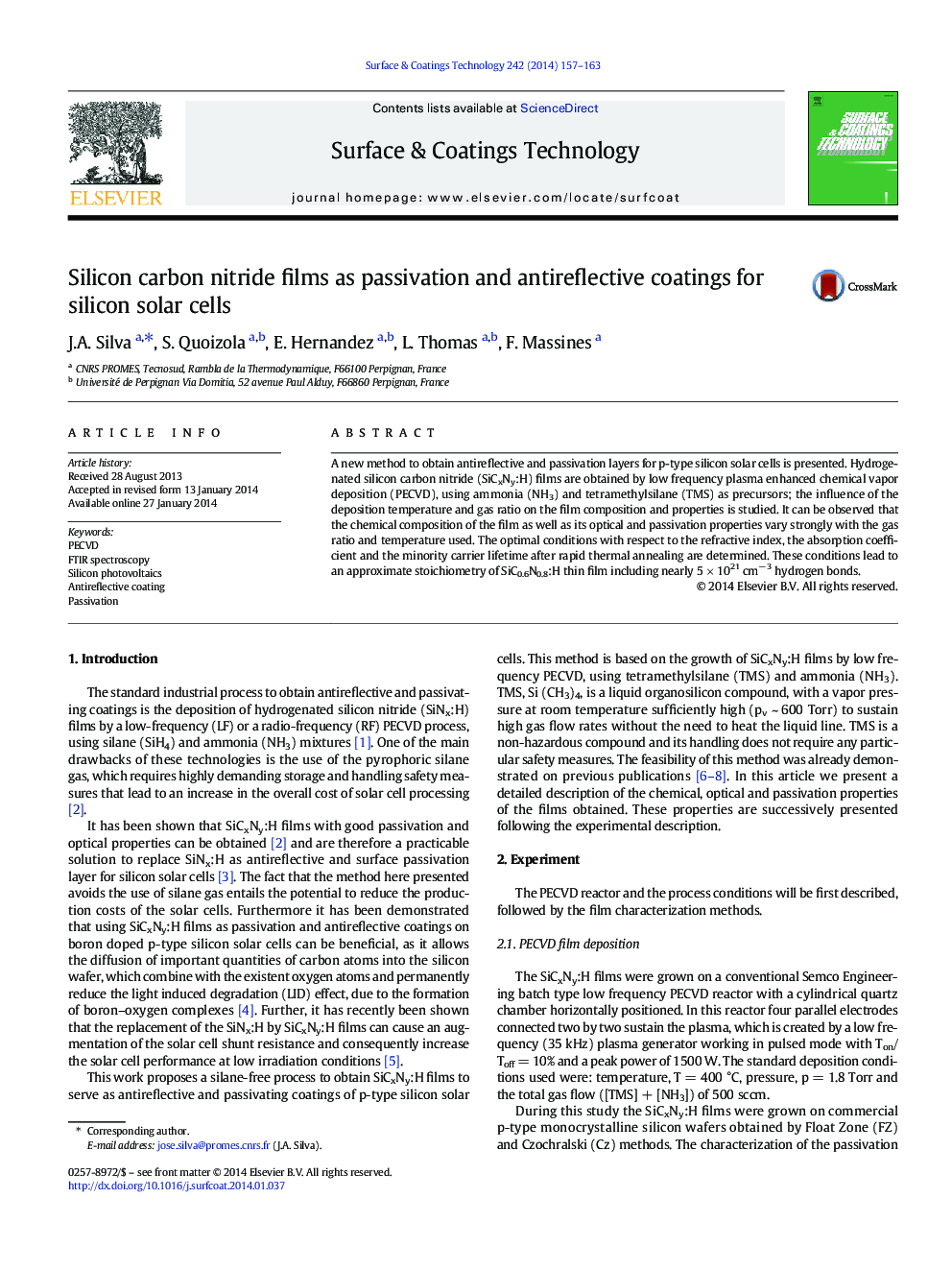| Article ID | Journal | Published Year | Pages | File Type |
|---|---|---|---|---|
| 1657605 | Surface and Coatings Technology | 2014 | 7 Pages |
•New method to obtain antireflective and passivating SiCxNy:H films by PECVD•NH3 and TMS (tetramethylsilane) used as precursors•Deposition conditions modulate chemical composition and properties of the films.•Optimal deposition conditions determined•Films with adequate optical and passivation properties for PV applications produced
A new method to obtain antireflective and passivation layers for p-type silicon solar cells is presented. Hydrogenated silicon carbon nitride (SiCxNy:H) films are obtained by low frequency plasma enhanced chemical vapor deposition (PECVD), using ammonia (NH3) and tetramethylsilane (TMS) as precursors; the influence of the deposition temperature and gas ratio on the film composition and properties is studied. It can be observed that the chemical composition of the film as well as its optical and passivation properties vary strongly with the gas ratio and temperature used. The optimal conditions with respect to the refractive index, the absorption coefficient and the minority carrier lifetime after rapid thermal annealing are determined. These conditions lead to an approximate stoichiometry of SiC0.6N0.8:H thin film including nearly 5 × 1021 cm− 3 hydrogen bonds.
